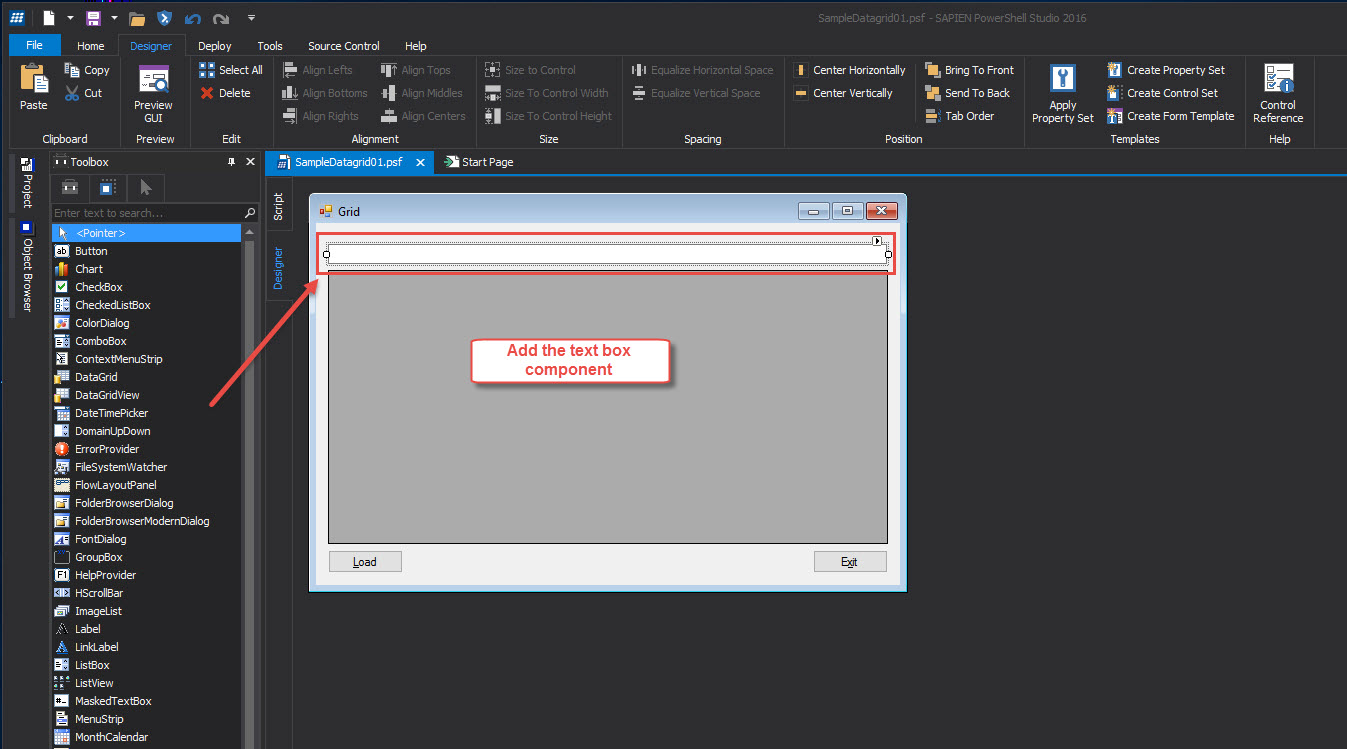

- #SAPIEN POWERSHELL STUDIO MOVE FORM UNDERNEAT HOW TO#
- #SAPIEN POWERSHELL STUDIO MOVE FORM UNDERNEAT UPDATE#
- #SAPIEN POWERSHELL STUDIO MOVE FORM UNDERNEAT FREE#
Version 3.0.3 of PowerShell Studio has a Control Set called “Button – Start Job”. Now that we covered the caveats, we can now begin to modify our forms so that it can handle jobs. Therefore, you will need to use a Timer control to check the job’s status periodically.

:: DoEvents()Įven with this work around you cannot access the form controls directly. WindowState = 'Minimized' #Will not work #Handle the events so the message will display If you try to register an event handler for the job’s StateChanged event using Register-ObjectEvent, you find that it will not seem to trigger while the form is displayed, unless you call the ::DoEvents() method mentioned in the Creating Responsive Loops article.įor example: Register-ObjectEvent -InputObject $Job -EventName StateChanged ` To determine if a job is complete you will need to check the status of the job. The form controls do not allow themselves to be accessed from a different thread (i.e., the job).Ģ.
#SAPIEN POWERSHELL STUDIO MOVE FORM UNDERNEAT UPDATE#
If you need to update a form control or show progress, use the Receive-Job cmdlet to gather any necessary information from the job first and then update the control from the main script.

Never access or modify form controls directly from within a job. There are two caveats you need to keep in mind when using jobs within a Form.ġ. Suppresses the command prompt until one or all jobs are complete. Gets the background jobs that were started in the current session. Starts a background job on a local computer. Please refer to the MSDN PowerShell Jobs help page for more information. For your convenience we will list the cmdlets that are directly related to jobs. This article will not cover the ins and outs of jobs and it expects the user has some basic knowledge of the jobs mechanism in PowerShell.
#SAPIEN POWERSHELL STUDIO MOVE FORM UNDERNEAT FREE#
In this case it will free up the GUI and allow it to respond to user input. If you truly want to make your forms responsive, you will need to move these slow scripts into another thread and in the PowerShell world this means using jobs.įor those of you who aren’t familiar with PowerShell Jobs, they allow you to run scripts while freeing up the console to perform other tasks.
#SAPIEN POWERSHELL STUDIO MOVE FORM UNDERNEAT HOW TO#
Previously I discussed how to make your loops more responsive in this article, but not every long script comes in the form of a loop. The idea behind having it separate is to have it isolated and more control over it, reporting on costs etc for the management group will also be an advantage.When working with GUIs you may have noticed that the Form can freeze when running long scripts. Has anybody experienced the same, or should I rather just leave those subscriptions lying there.

Even if I could get a subscription export with OfferId I could use that list to automate move all these subscriptions into a specific management group. So far we have had no joy or functions using the Powershell or Azure CLI to actually filter the subscriptions by OfferId. We are looking to automate a script to check for the offerId of the subscription and move all these into a specific management group. The problem we are facing at the moment is that out root of the management group structure has a bunch of Visual Studio Professional(/MSDN) subscriptions. We currently have a lot of subscriptions in Azure which we managed, these range from the different execution environments(dev,test,etc) and are all grouped inside a management group structure to make RBAC and policies easier.


 0 kommentar(er)
0 kommentar(er)
